It took a global pandemic to draw attention to the sorry state of healthcare. Till then it seemed convenient to sweep the potentially fatal impact of outdated, overloaded, and slowly decaying medical systems under the rug. An annoying little virus stubbornly challenged our health and the infrastructure of healthcare. Now all eyes are on innovative technological solutions with blockchain right in the center.
One would think that healthcare is a global concern and exploring possible improvements such as blockchain in healthcare should be in everyone’s interest. The problem is, the industry involves a lot of actors. They have very different priorities. Systems supporting the various needs were set up separately – we’re talking legal systems, communication systems, financial systems and so on.
Also, they originally weren’t created with digital technologies, or the need to integrate with systems around the world, in mind. So, when it comes to healthcare, we are practically dealing with a huge patchwork of uneven, unmatching means and methods.
Web3 in healthcare? It depends
In the age of Web3, it may be time to rethink the entire healthcare infrastructure, rather than try to stitch the uneven bits together. Blockchain technology could provide the decentralized foundation for an integrated health data grid instead of the current centralized patchwork.
Research has proven that the decentralized ledger technology offers solutions and improvements in many areas of healthcare.
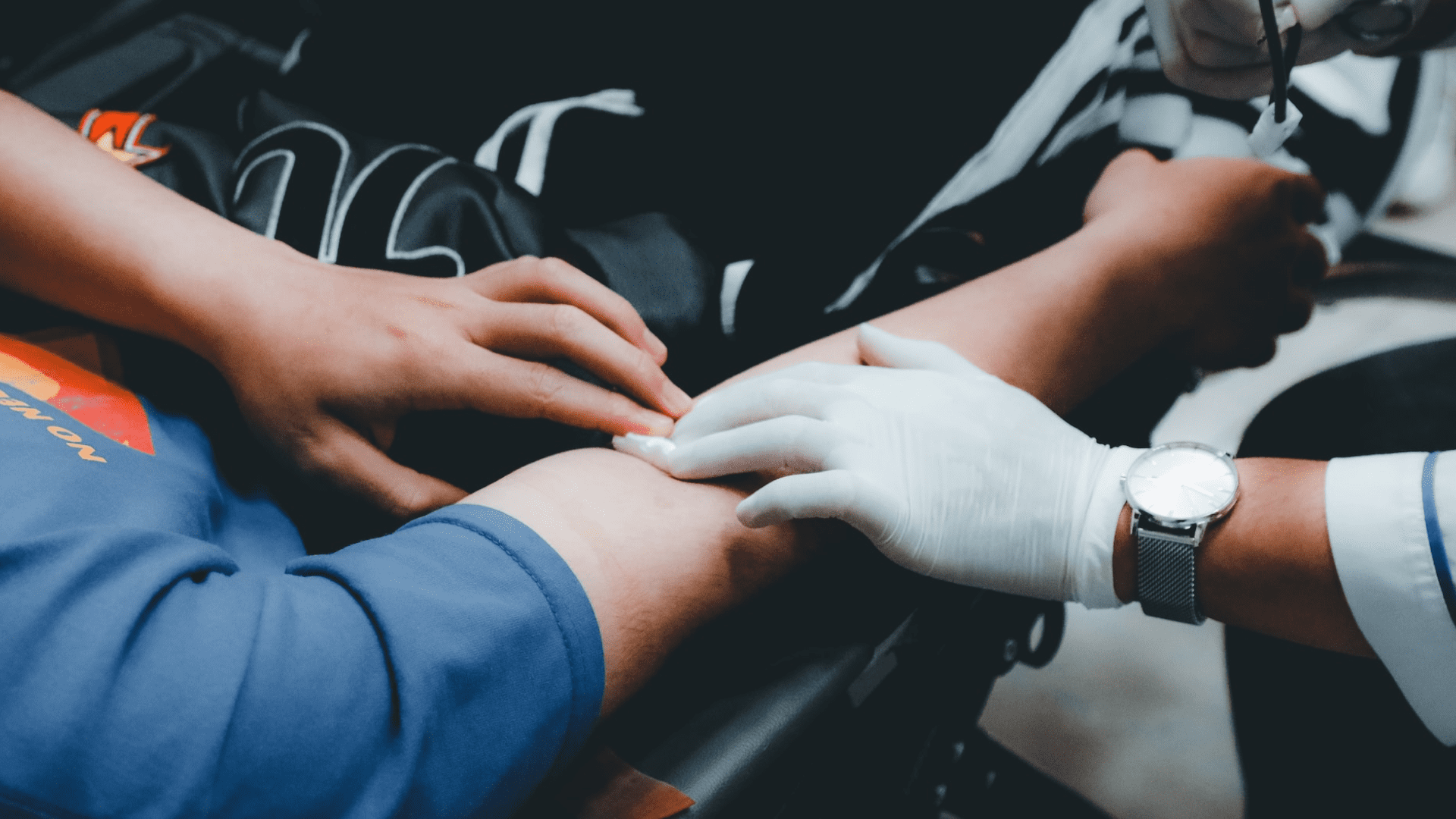
But blockchain applications in healthcare have not been broadly implemented – shall we say ‘yet’? We definitely think so. Even though the advantages are undeniable, transitioning to Web3 in healthcare may require organizations to restructure. Institutions need to realign basic rules and methods and abandon certain ingrained practices. These things need time.
It’s a long game. At this stage, education, finding more blockchain use cases in healthcare and testing of blockchain applications in healthcare are critical.
The technology should be applied where it offers unique proven advantages. Just like you wouldn’t go to a specialist with your common cough because they’ll only do what your family doctor does for less money.
Same with blockchain. There’s no point pushing the technology in areas where existing technologies can solve the issues. Implementing Web3 in healthcare still requires a lot of effort and resources. These should be used wisely, where the results are most definite and can’t be achieved with legacy technologies.
This article will help you understand what these areas are and where to find resources on how blockchain healthcare startups can solve pressing issues. We also offer examples of existing apps and government initiatives.
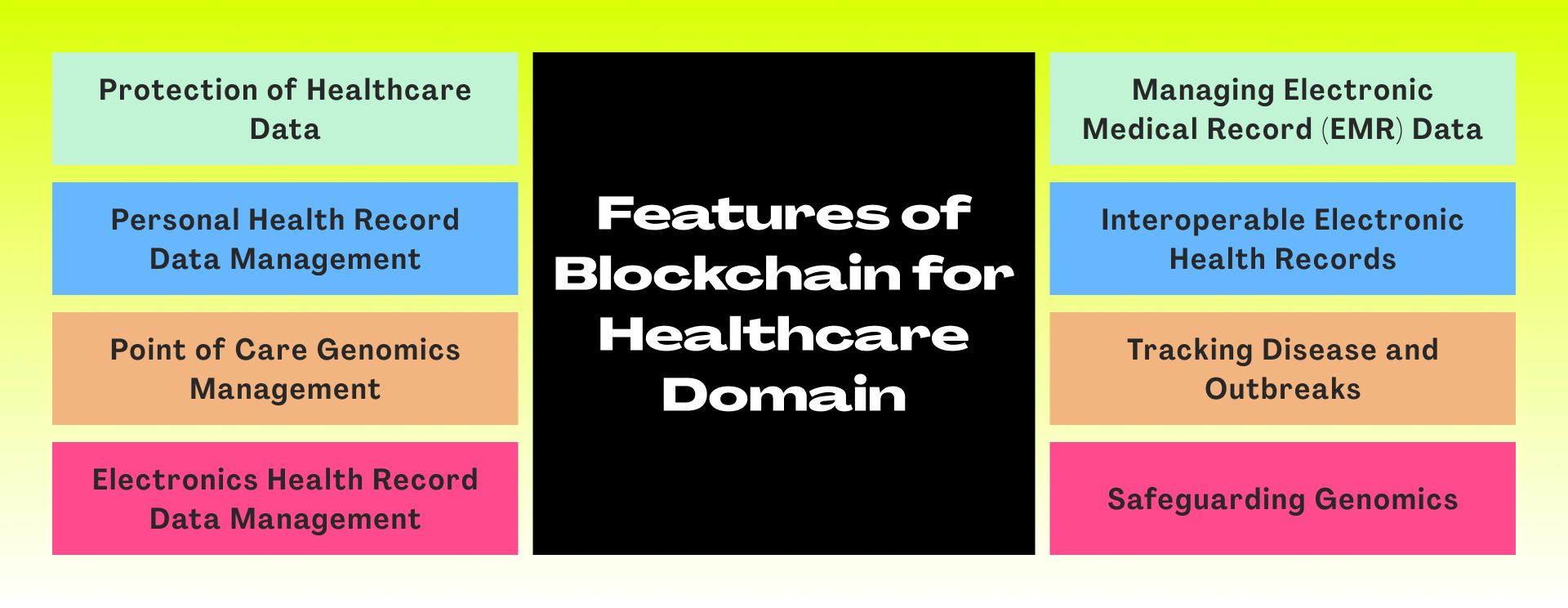
Dr. Blockchain is a healthcare specialist for…
Health related data is sensitive and its management requires profound caution. The combination of transparency and anonymity, immutability and self-ownership in blockchain technology makes it uniquely suited for cases calling for the following:
- Data integrity and non-reputability – data stored on the blockchain is more accurate and reliable than data stored in a conventional cloud setting.
- Data access control – individuals gain full authority over who can access which data and under what condition.
- Data logging and versioning – data can be stored over long periods of time without the risk of being manipulated. Adding new versions of health documents does not impact the original data record.
If blockchain was a medicine – blockchain use cases in healthcare
Without a doubt, these three are hot topics not only for healthcare. Privacy, security and reliability concerns come up wherever data is managed and transferred digitally. In healthcare, however, data accuracy or access to data could become a matter of life and death.
The main areas where use of the decentralized ledger technology has been researched are:
- Electronic medical record (EMR)
- Remote patient monitoring
- Pharmaceutical supply chain
- Health insurance
- Biomedical research and clinical trials
- Healthcare data and predictive analytics
We’ll take a closer look at the specific challenges, how blockchain addresses them and some of the research conducted.
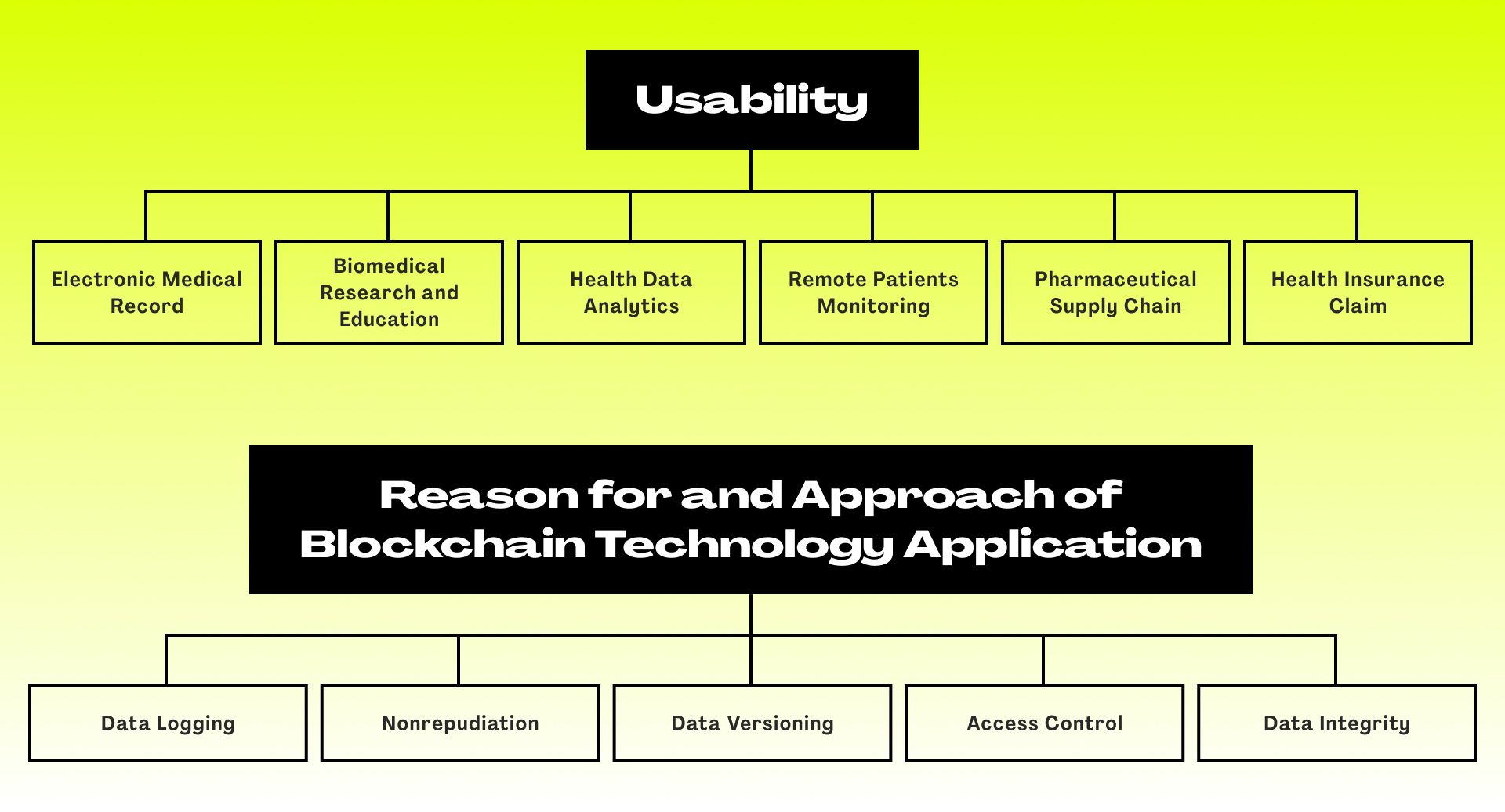
Electronic medical record (EMR)
Everyone’s medical history, medication, allergies, immunization status, laboratory test results, radiology images, and personal statistics like age and weight, and billing information are kept somewhere electronically. Yours, too, you know that.
It’s all a bureaucratic mambo-jumbo
And if you have concerns regarding privacy and security of sensitive information, you’re not alone. Keeping it safe from breaches and protected against unauthorized access is a challenge because records need to be made available to medical institutions, insurances, private doctors, pharmacies, etc.
Partial medical records are stored in different systems of various organizations that don’t necessarily speak to each other. That means hard copies are still necessary and as a patient you need to run around fetching and delivering them manually. On the other hand, you don’t always have access to your own health records.

Sounds like a mess? It’s only a small part of it. How can we keep trusting such a system? Current centralized digital technologies struggle to provide the security that would make us sleep quietly at night. Still, we have no choice but to put our health in the hands of caregivers that rely on a disjointed, messy, un-trustworthy system.
Taking ownership and control
Using blockchain technology, patients own their medical data and keep it all in one place. You can access all your medical records and manage access permission as needed. Several universities have developed and experimented with applications that confirm this assessment.
- The MIT (Massachusetts Institute of Technology) Media Lab and Beth Israel Deaconess Medical Center developed MedRec, a blockchain application allowing patients to grant and revoke third-party access to specific records.
- A similar application, MedBlock was introduced by Xidian University, China. Both utilize blockchain technology to enhance efficiency and secure electronic medical data sharing,
The goal of these and other research initiatives was to pass control over medical records to the care receiver instead of the various care providers. Some addressed cancer patients, others focused on diabetes. These groups require long-term care involving constant tracking and evaluation of their condition. Using blockchain ensures that every reading of symptoms and vital signs is immutably recorded and time-stamped.
The question of security
- A recent study at the University of Essex, UK created a sophisticated cybersecurity architecture to allow for safe data transmission in healthcare systems. The researchers propose a technique called Consultative Transaction Key Generation and Management (CTKGM) based on blockchain in combination with additional advanced technologies.
- In a joint effort, American and Chinese scientists developed the blockchain-based privacy-preserving data sharing (BPDS). The system uses the Ethereum blockchain platform, which reduces the risk of medical data leakage and secures data sharing in health care. Their research has shown that centrally stored health records are more vulnerable to cyberattacks.
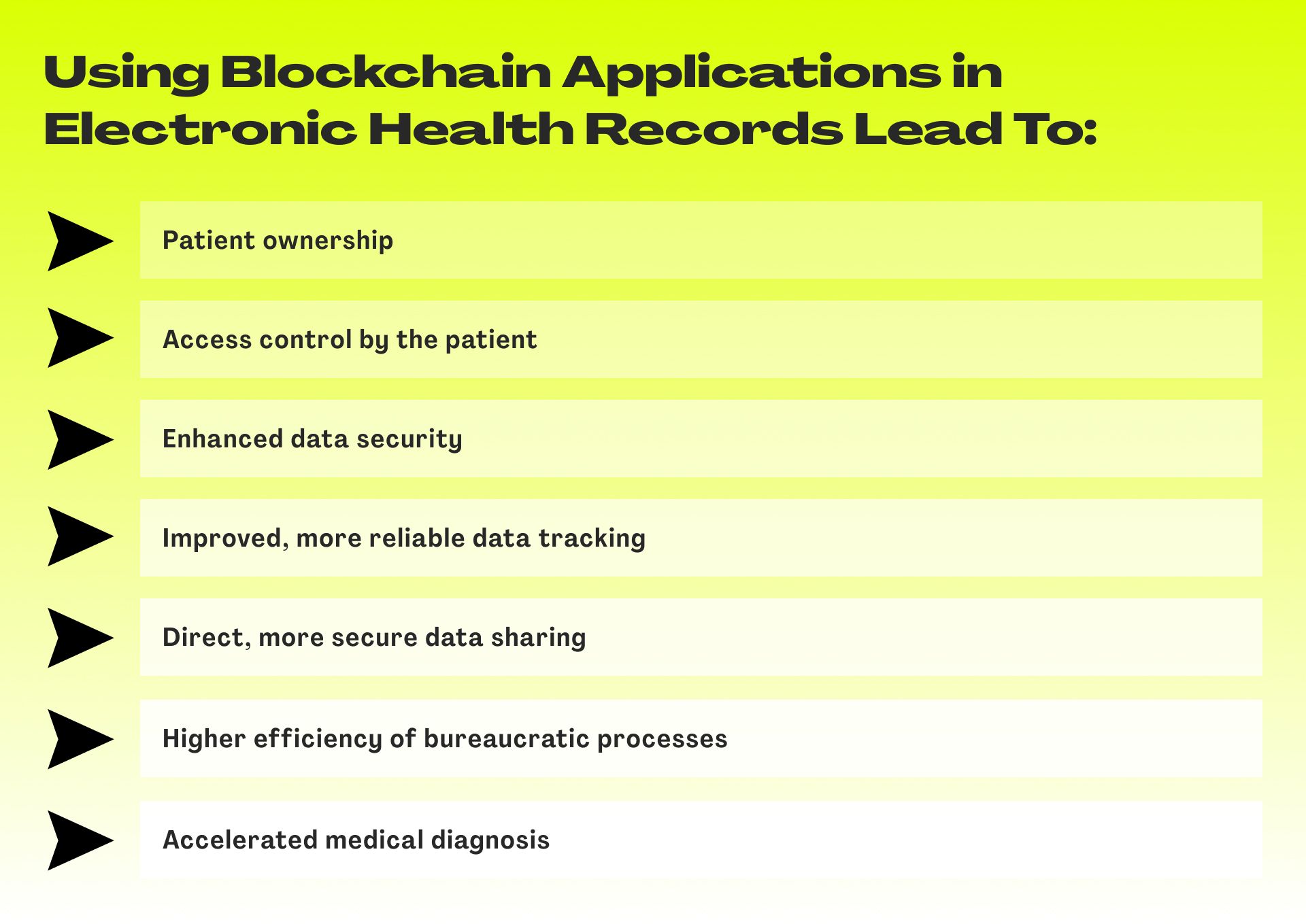
Remote patient monitoring
It’s hard to imagine what we did before mHealth (mobile Health apps) and IoMT (Internet of Medical Things). Its convenience is undeniable, particularly for elderly and special needs population and in scarcely populated regions.
Convenience comes at a price
In fact, mobile health apps and sensor devices are overpopulating the medical industry. This leads to new challenges. Each system operates differently and instead of simplification, patients and practitioners get confusion. Medical staff ends up with a higher workload and not necessarily higher efficiency and improved care.
In addition, apps and devices connected to the internet are susceptible to Distributed Denial of Service (DDoS) and other types of attacks. 5G further increases the availability and deployment of these apps, increasing the attack surface and making them more attractive targets.

Simple and direct
In decentralized Web3 apps, data is transferred directly from the patient to the doctor. As a patient, you store your medical data in your wallet, not the mobile app or a centralized cloud storage. There are no middlemen and no third party service providers.
In remote applications, this ensures secure gathering, sharing, and collaboration of data directly between health care providers and individuals. You simply connect your wallet to the health app and grant access permission as needed.
A wide adoption of blockchain technology eliminates the need to access multiple data storage systems.
For example, diabetes patients need to frequently monitor parameters, such as blood sugar level and share it with relevant care takers. Digital systems need to guarantee data transmission and access are secured.
- Saravanan et al proposed SMEAD: A secured mobile enabled assisting device for diabetics monitoring using the Ethereum blockchain. This system enables real-time prediction of a patient’s diabetes status and provides healthcare professionals with access to the patient’s health records for prescribing suitable medication dosages.
- The Institute of Neuropsychiatry, Seiwa Hospital, Tokyo, Japan, used a blockchain-based, mobile system to enhance both data transparency and accessibility for diabetes patients without the involvement of a third party.
Pharmaceutical supply chain
Did you ever try to envision the journey an Aspirin takes before it reaches your medicine cabinet? Don’t! It’s a long one and you’ll probably lose trust in the supply chain.
Counterfeit medications are a serious and growing problem in the medical care sector. One of the biggest challenges patients, providers and regulators face is verifying authenticity. It requires a reliable tracking system of each package through the entire supply chain from factory to patient.
However, putting the supply chain data on a blockchain closes many security gaps.
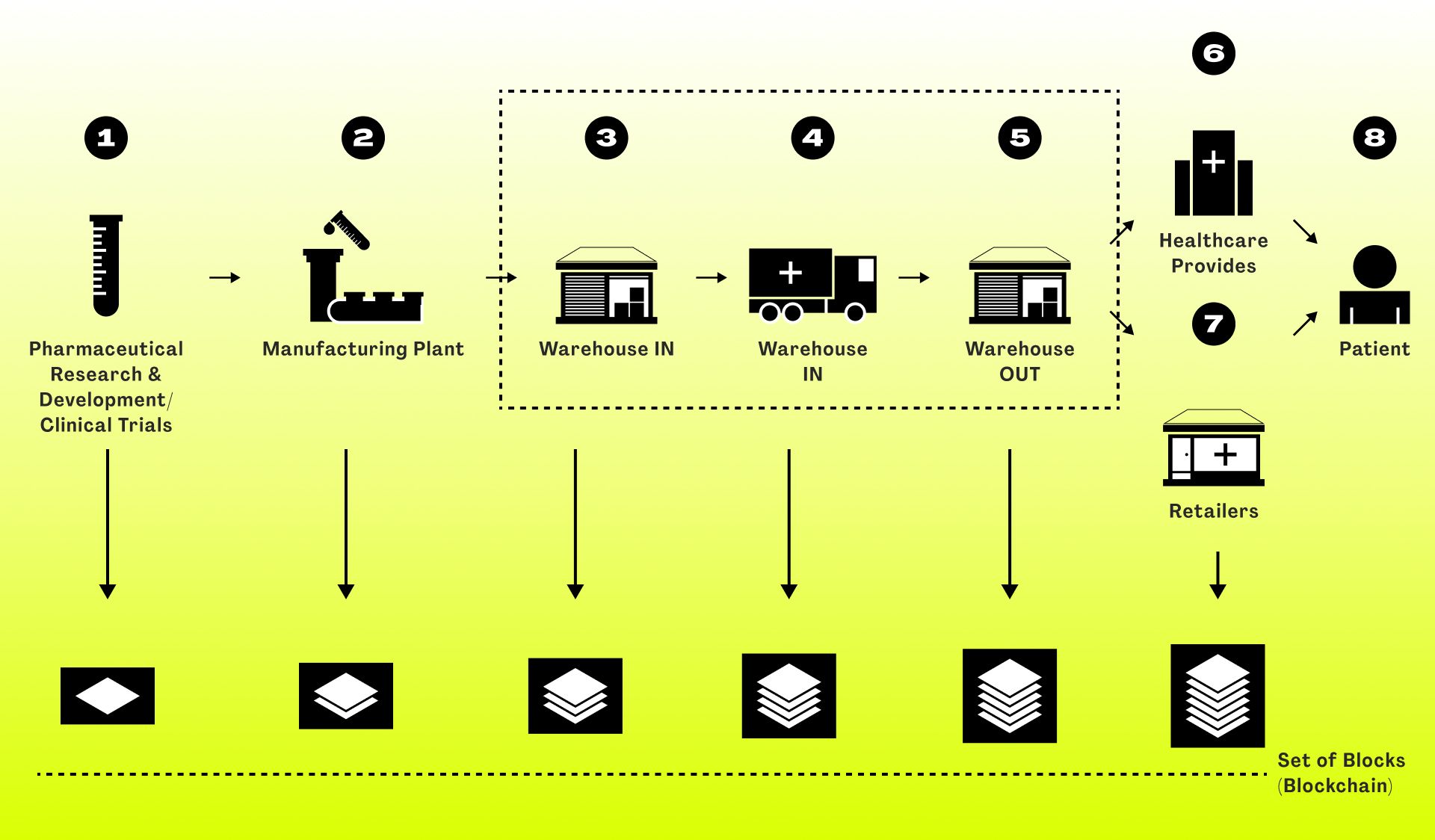
The manufacturer records and time-stamps relevant information such as type of medicine, expiry date and origin of each package onchain upon leaving the production facility. As the package moves through the supply chain, it gets scanned each time it swaps hands. The transaction is verified on the decentralized ledger and approved, if found matching.
- A group of researchers in the University of Zurich went a step further. They demonstrated blockchain’s effectiveness in monitoring storage and transport conditions by using ambient temperature sensors to record and store temperature measurements on a public blockchain.
This method not only ensures data integrity but also enables transparent inspection, and reduces operational costs. Integrating IoT sensors and blockchain, compliance with quality control temperature requirements is verified, and the origin of products in the supply chain is proven.
Health insurance
Financing healthcare is a topic in itself – and not a popular one. Healthy people avoid thinking about it because no one really grasps the conditions, what they include, how they are calculated, how to claim, when they can claim, and which insurance handles what.
Insurance companies each have their own rules and procedures. This leads to convoluted, dragged-out processes, a lot of misunderstandings, and false or unanswered claims. You’ll be nodding your head now, if you’ve ever filed a serious claim. It’s frustrating. It also results in loss of time and money for everyone.

Let smart contracts deal with it!
This HHS whitepaper highlights how leveraging blockchain’s capabilities, health insurance claims become more efficient, transparent, and trustworthy for all stakeholders involved. Manufacturers, retailers, healthcare organizations and insurances operate based on fully digital and automated contract terms.
Using the same healthcare blockchain, they can draw on the same indisputable information source. Smart contracts ensure transactions are carried out according to the agreed upon conditions. And, voila! Payment disputes are a thing of the past (or at least a large percentage of them).
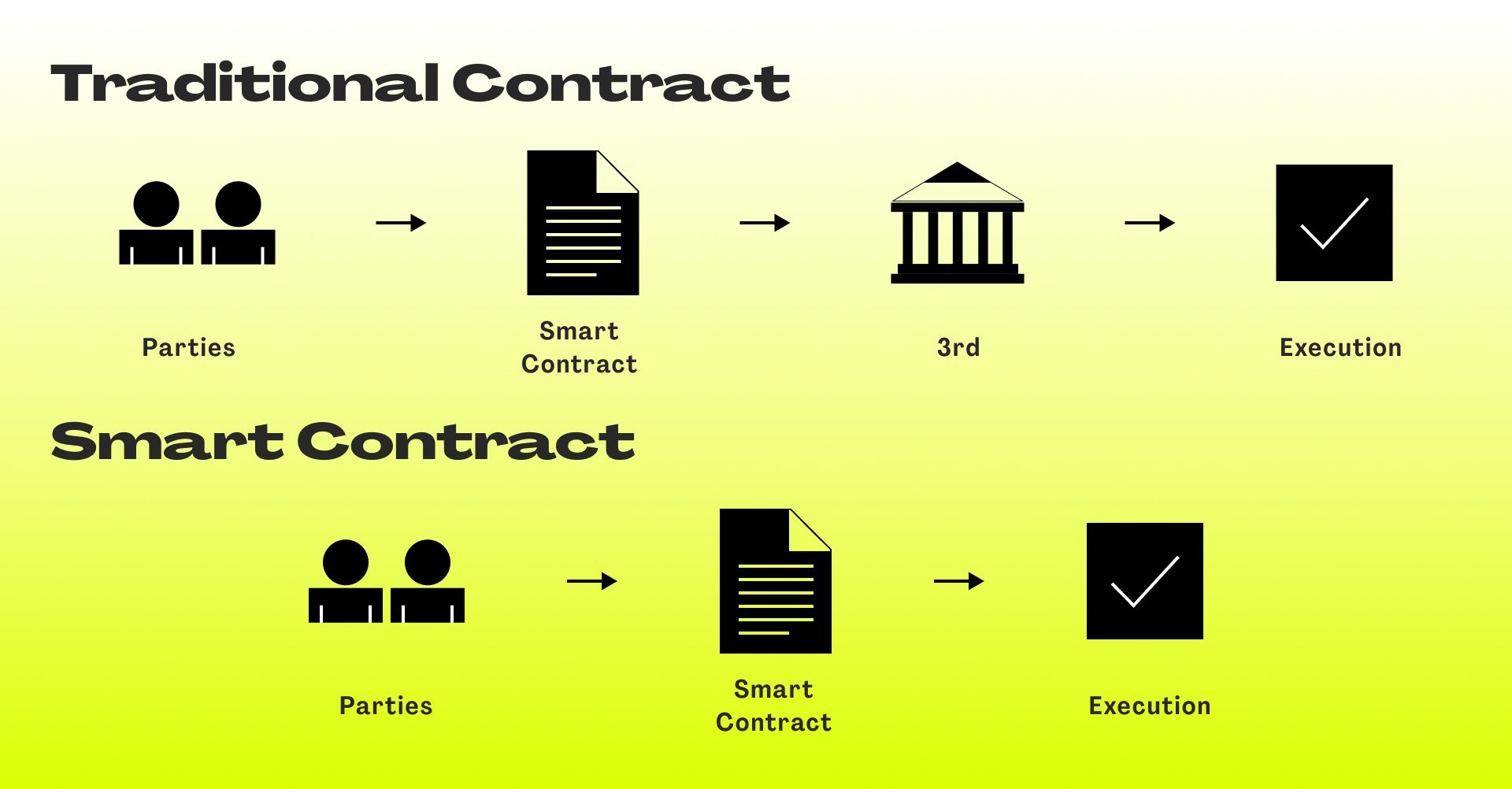
Contracts with patients can also be managed on the blockchain, allowing for more transparency and efficiency. As a bonus, insurance companies can use the data for more advanced analytics to optimize offers, processes and costs.
- A widely shared research paper explains how a blockchain-based medical insurance storage system using Ethereum, enhances credibility and eliminates third-party involvement. This system securely logs and stores patients’ spending data on the blockchain, ensuring data integrity and privacy. Insurance companies can access this data while maintaining its immutability.
Biomedical research and clinical trials
It’s the foundation of all medical and pharmaceutical innovation. It also relies on the willingness of patients to share data. The outcome depends on the amount of data collected and its accuracy.
You can probably already guess what’s hampering practical research projects.
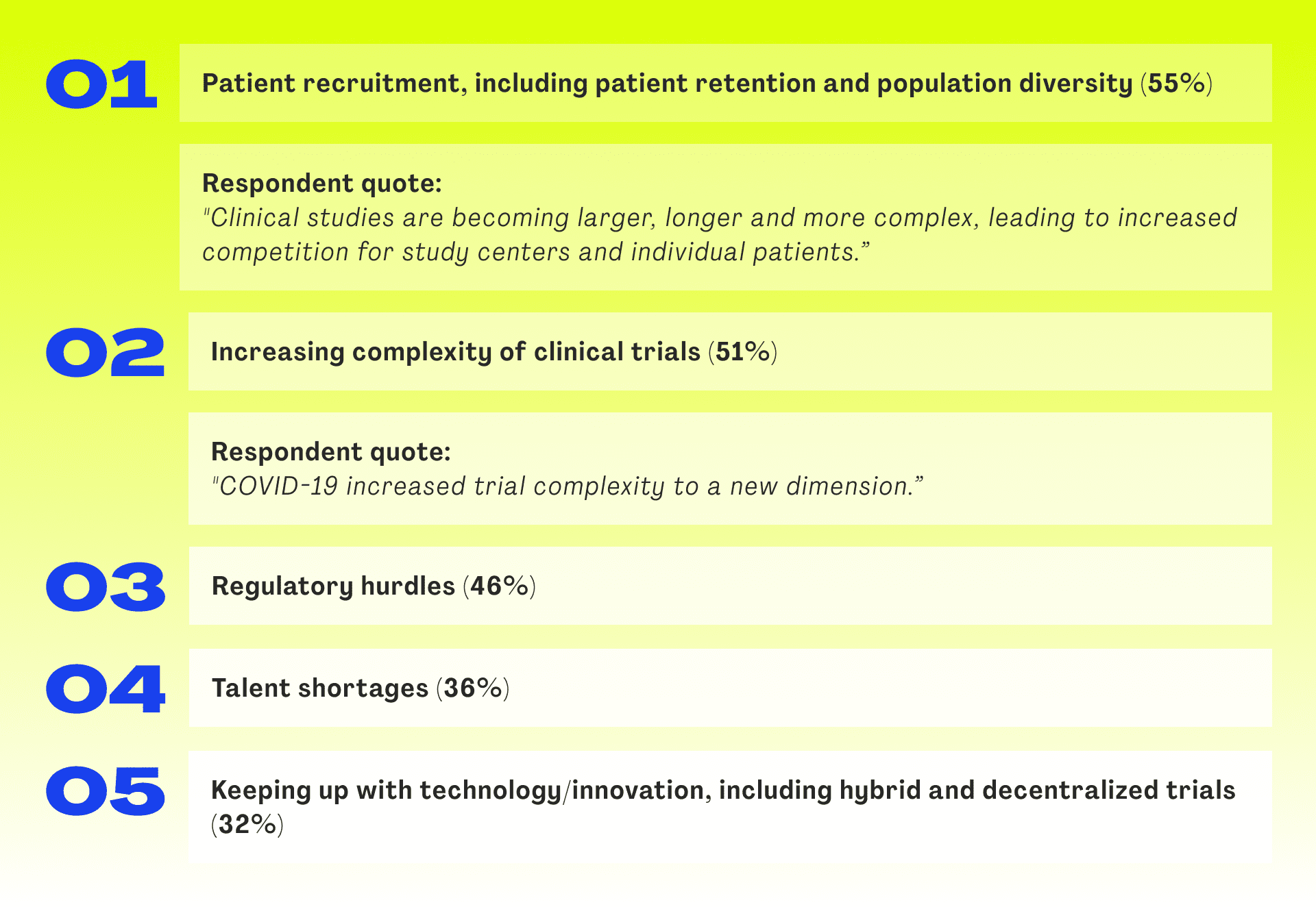
Survey results from December ‘22 show that the number one challenge for drug producers is recruiting participants. Patients are reluctant to share data and that’s understandable. Again, we’re dealing with a lack of trust in a system people can’t comprehend. It’s too complex, there are too many parties involved and you have no control over – or say in – anything.
Researchers therefore struggle to enroll enough participants and receive accurate data. Increasing complexity and regulatory restrictions are also stifling research efficiency.
Many already turned to blockchain. The technology has been used extensively to preserve data privacy, integrity, record sharing, and record keeping in clinical trials.
- At Kingston General Hospital in Canada, BlockTrial, a web-based interface system that allows users to run trial-related smart contracts on the Ethereum network, has been implemented. Data is not shared publicly before an agreement is reached. The clinical research institute can also guarantee that the data obtained are authentic and useful.
- Researchers in India show how use of keyless signature infrastructure (KSI) blockchain technology ensures authentication and integrity of electronic health records (EHRs) without the need for network connectivity or third-party involvement.
- A group of Italian researchers proposed a proof-of-concept implementation of consent traceability in clinical trials using Ethereum. All plans, consent, protocols, and possible outcomes are stored on blockchain even before the inception of clinical trials, which prevents any corruption and undesirable study results.
Health data analytics
In healthcare the integrity of data is vital in the most literal sense of the word. That’s true also when data is used for analytics.
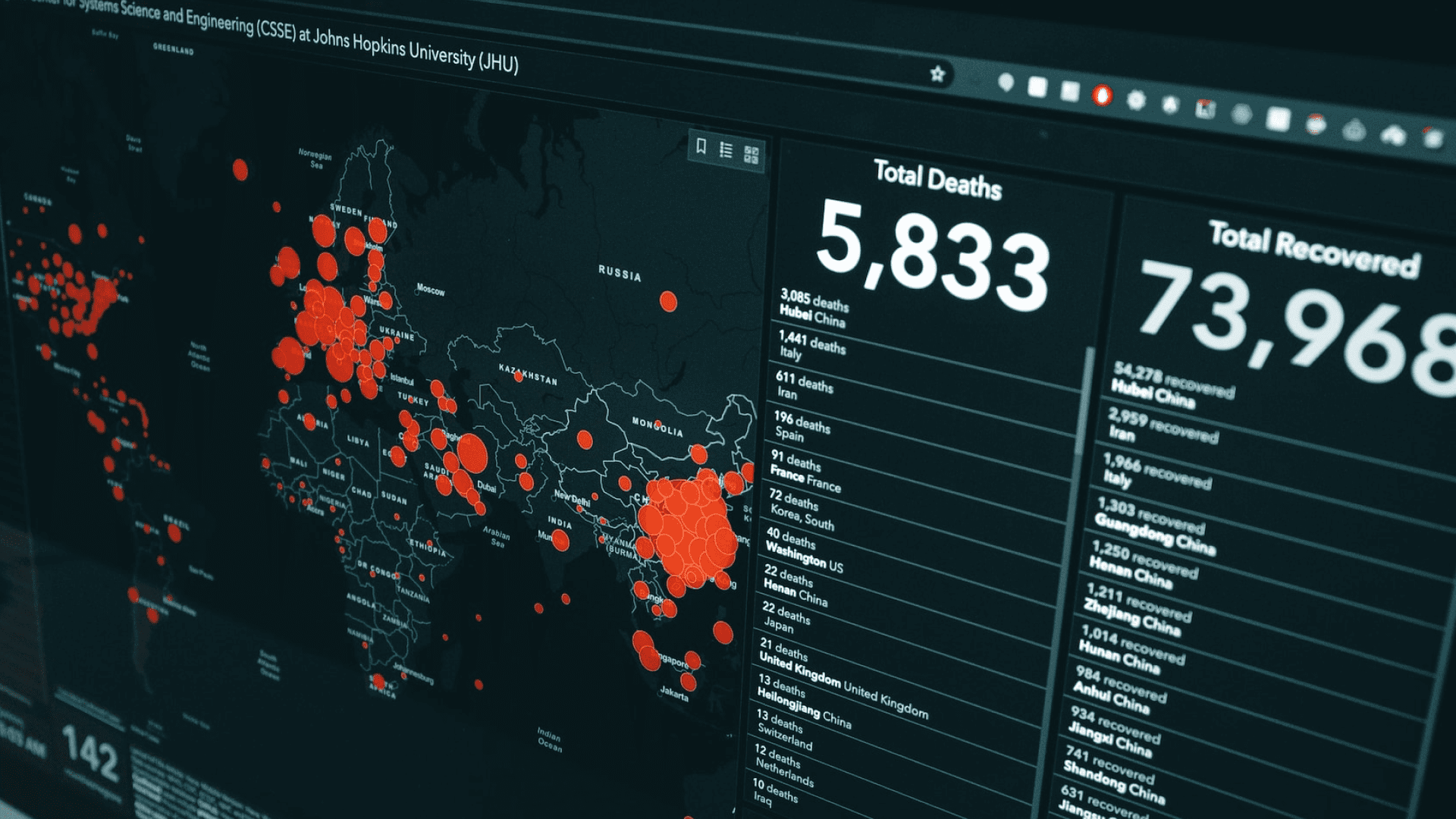
- The CDC (Center of Disease Control) in the US is exploring how using blockchain can address privacy and security concerns in tracking public health data. The goal is to use anonymous but reliable data to track health trends and inform the opioid epidemic, controlling the spread of infectious disease and deploying experts to crisis zones.
A healthcare blockchain, in combination with other emerging technologies like deep- and transfer-learning, helps identify predictive insights from healthcare data.
- Researchers in Ukraine proposed a decentralized health data ecosystem that protects medical data confidentiality, produces an effective shared health infrastructure, and increases the basis of clinical data collection for analytics.
- Talukder et al used blockchain in predictive analytics and introduced Proof of Disease, a consensus protocol for medical decisions.
It’s questionable whether we’d want our doctors to put the decisions regarding treatment options, and medication doses in the hands of algorithms and consensus protocols. But the data they produce can provide the basis for more accurate human decisions.
The praxis – blockchain healthcare startups and companies
You’ve read this far and understand that research has already proven the value blockchain technology can bring to healthcare. The question is, what was done about it? Have the advantages been realized in the ‘real world’?
Here are some examples of blockchain use cases and apps that are up and running:
- The Mediledger blockchain is a life sciences industry network that runs solutions for data alignment, validation and transaction settlement between trading partners. It was established in 2017. In the summer of 2020, the Health Industry Business Communications Council (HIBCC), announced the integration of its Health Industry Number (HIN) System with MediLedger. The developer and custodian of the Mediledger network is Chronicled, a technology company leveraging blockchain and IoT to power smart, secure supply chain solutions.
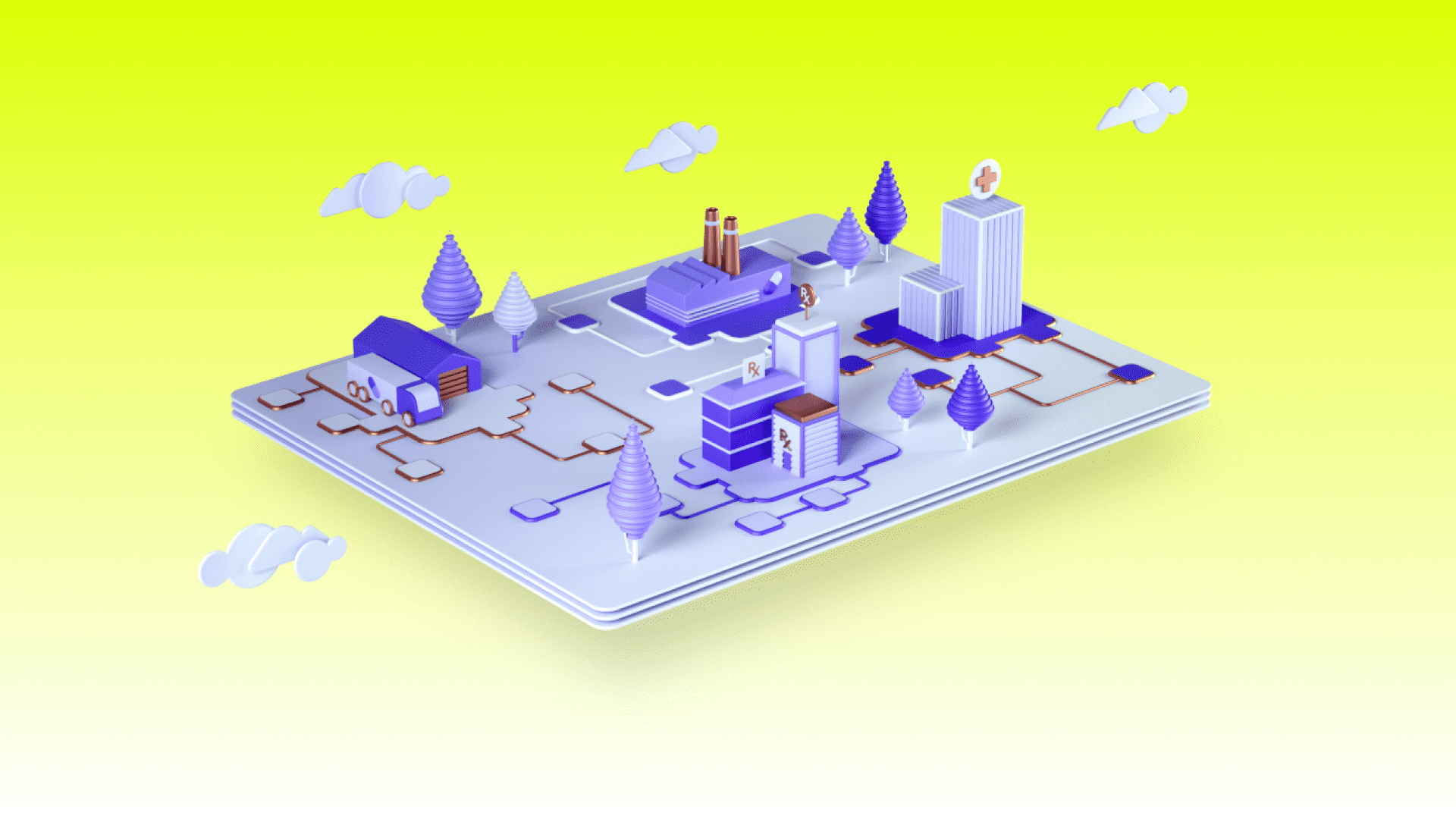
- Healthverity, a true pioneer, was founded in 2014 and is today the largest healthcare and consumer data ecosystem in the US. Healthverity Marketplace, a self-service cloud solution allows users to build custom cohorts and instantly see patient counts and overlaps in real time. The solution offers data management features for pharmaceutical, government, insurance and analytics companies.
- Medicalchain is a decentralized platform that enables secure, fast and transparent exchange and usage of medical data. Combined with telehealth and IoMT features, practitioners provide service remotely. With permission from the patient they can access device readings and medical records.
- Bangkok-based Ever Medial Technologies connects over 170 hospitals and 5 million patients. The Ever Network provides an integrated but modular suite of software that features secured and trustless data exchanges, big data collection and analysis, and machine-learning/artificial intelligence-powered tools and features.
- The Patientory dApp offers patients a digital health data wallet where they manage health data and who can access it. Patientory also includes a digital health coach and users can earn rewards for high health scores.
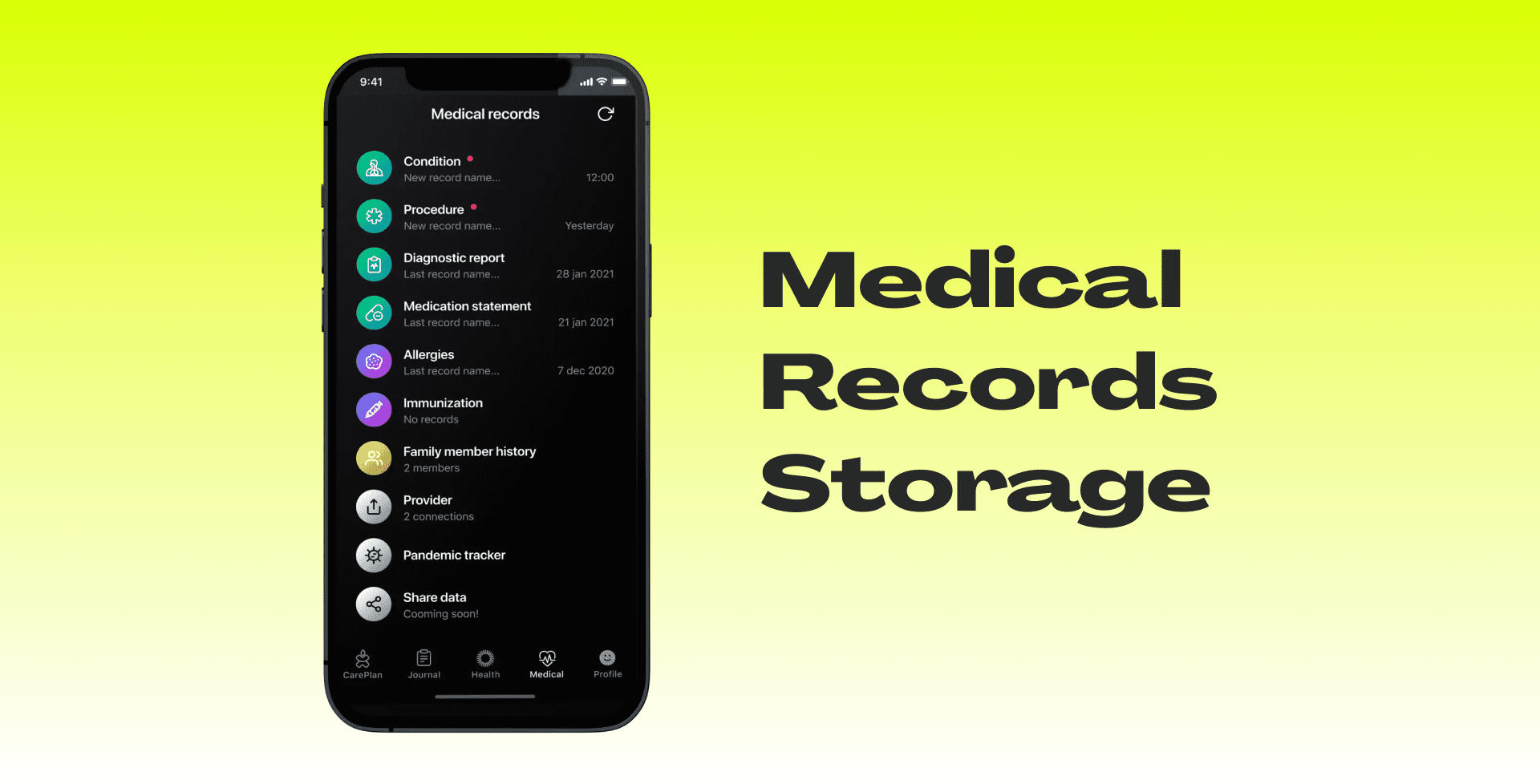
Onchaining healthcare slowly but surely
Adoption of blockchain in healthcare is slow. But maybe that’s not a bad thing.
Moving from legacy data systems to onchain health data management requires organizations to be open to new organizational paradigms.
It involves a shift to decentralized and distributed solutions, which may not align with existing business models, regulations, and technology infrastructure. A transition like this needs careful planning and consideration of the implications.
In other words, it goes beyond the pure technological changes.
What to keep in mind
Getting everyone under one roof
Blockchains are intended to create direct connections between involved parties. As such they are designed for random individuals or consortia rather than single organizations. Companies involved in healthcare who form a blockchain-based consortium must establish clear agreements and responsibilities to ensure security and define rules for engagement.
On the other hand, blockchain technology has the potential to advance interoperability efforts in healthcare. Care givers, insurances, research institutions, medical equipment and pharmaceutical suppliers get the chance to tab into the same information source. Blockchain can create a single source of truth for the healthcare industry. This guarantees reliability and reduces malpractice and errors.

Specific needs and requirements
To achieve this, privacy and security are crucial. It’s not a one-size-fits-all solution. Depending on the type of data and how it’s used, organizations need to determine which blockchain architecture and deployment model suits their needs. They may want to have blockchain-savvy IT professionals on their payroll or 24/7 support from the solution provider.
Compliance
Another factor to remember in this industry is compliance. Health data is subject to strict regulations that vary by region.
In the US, we are talking about HIPPA which regulates issues of data exchange and GDPR in the EU which addresses privacy concerns. Chinese privacy laws are a little more strict.
Depending on the specific sector the health data app is used, additional rules and regulations may apply. The pharmaceutical industry and the medical device industry have their own regulations that may or may not apply. Transportation of medical goods is another area.
The good news is, regulations are based on legacy technologies’ capabilities. Web3 technologies have the advantage that they’re still nascent, offering new capabilities and causing lawmakers to rethink existing rules.
Where do governments stand?
In many regions governments have taken an active interest in exploring blockchain use cases in the healthcare sector.
Top countries:
- Estonia is recognized for using blockchain in their nationwide electronic health record system. Their model of the first digital society is a source of inspiration for other countries and societies.
- The UAE announced their first blockchain healthcare system to track licensing in 2019 and are on their way to becoming the second country with a blockchain-based healthcare system. The Emirates leverage the decentralized ledger technology also for medicinal safety verification, and organ donation to improve trust and transparency.

Europe:
The EU has positioned themselves as global leaders across sectors. The International Association for Trusted Blockchain Applications, combining private and public institutions is one example for the openness and positive approach to blockchain technology. They explore and support initiatives to apply blockchain in healthcare.
The European Blockchain Partnership and European Commission are leading international efforts in standardizing blockchain solutions across sectors. One such initiative is the European Blockchain Services Infrastructure, helping organizations move onchain. So far, services for the healthcare sector aren’t available, but that’s not to say, it never will.
USA:
Agencies such as the FDA, HHS, and CDC are exploring blockchain’s potential in healthcare. The FDA’s Drug Supply Chain Security Act supports pilot programs using blockchain to ensure compliance in the pharma and food supplements sector. There are some successful use cases in public health, most notably for food safety.

Individual states in the US have also taken initiative. Enacted state legislation varies from validating and defining the technology to researching and identifying pilot programs. States like Florida, Kentucky, and Illinois have introduced legislation to study blockchain’s impact on economic growth, cybersecurity, and government operations.
Closing thoughts
Web3 is bringing alternative solutions to the healthcare industry. In the not-so-far future we will see blockchain implemented gradually. How fast and widely the technology will be adopted depends on the sincerity of those who understand it and the curiosity of the ones who don’t – you belong to one of these groups.
We need a realistic approach to the possibilities of Web3 in today’s health ecosystem, and healthcare isn’t the only area that needs innovation. Pharmaceutical supply would also benefit from an update, and it is, thanks to DeSci projects active in that sector. Click onward in the Track to learn more.




